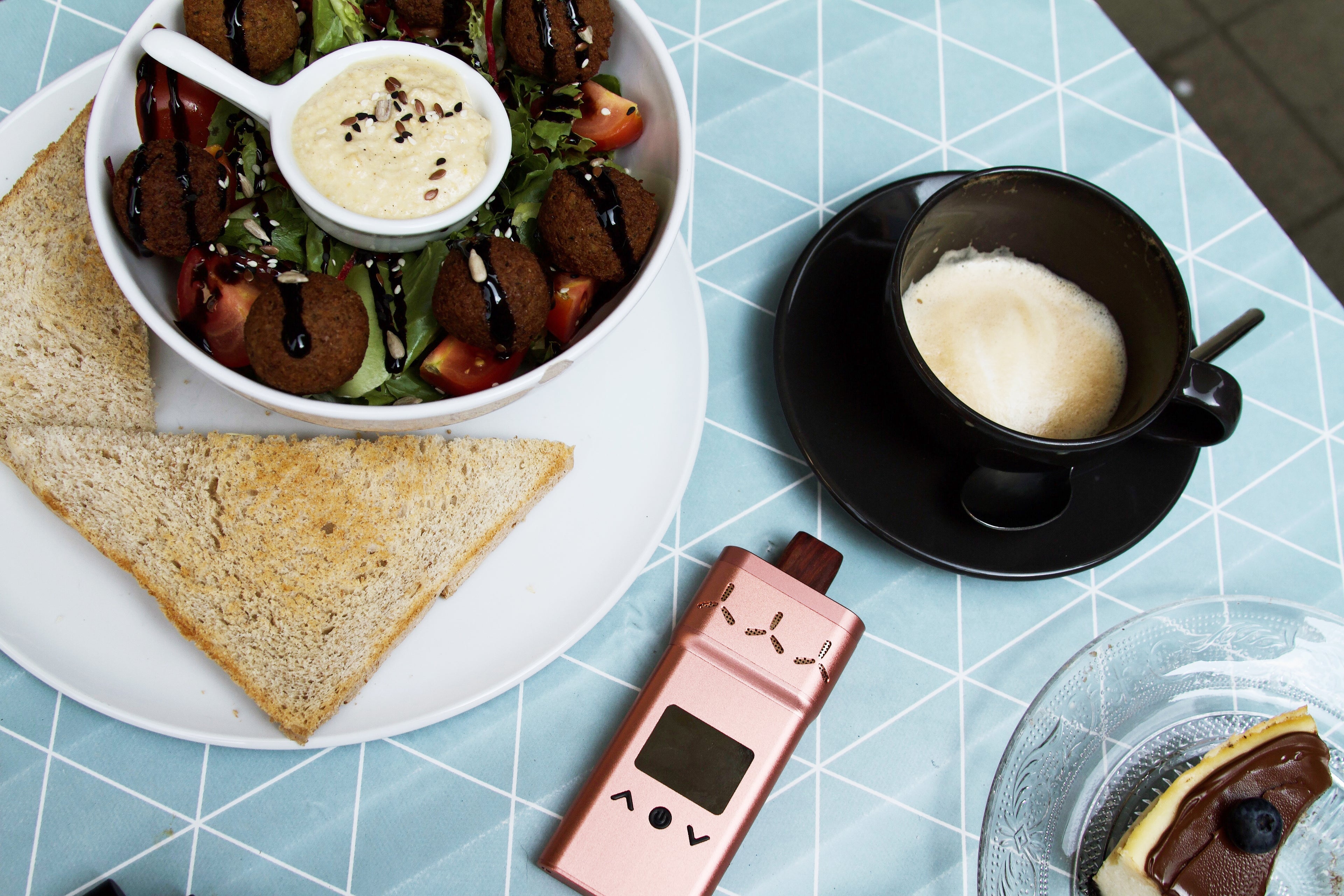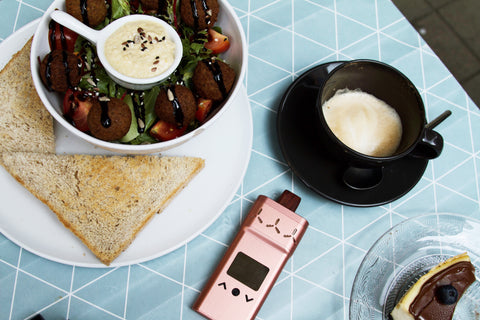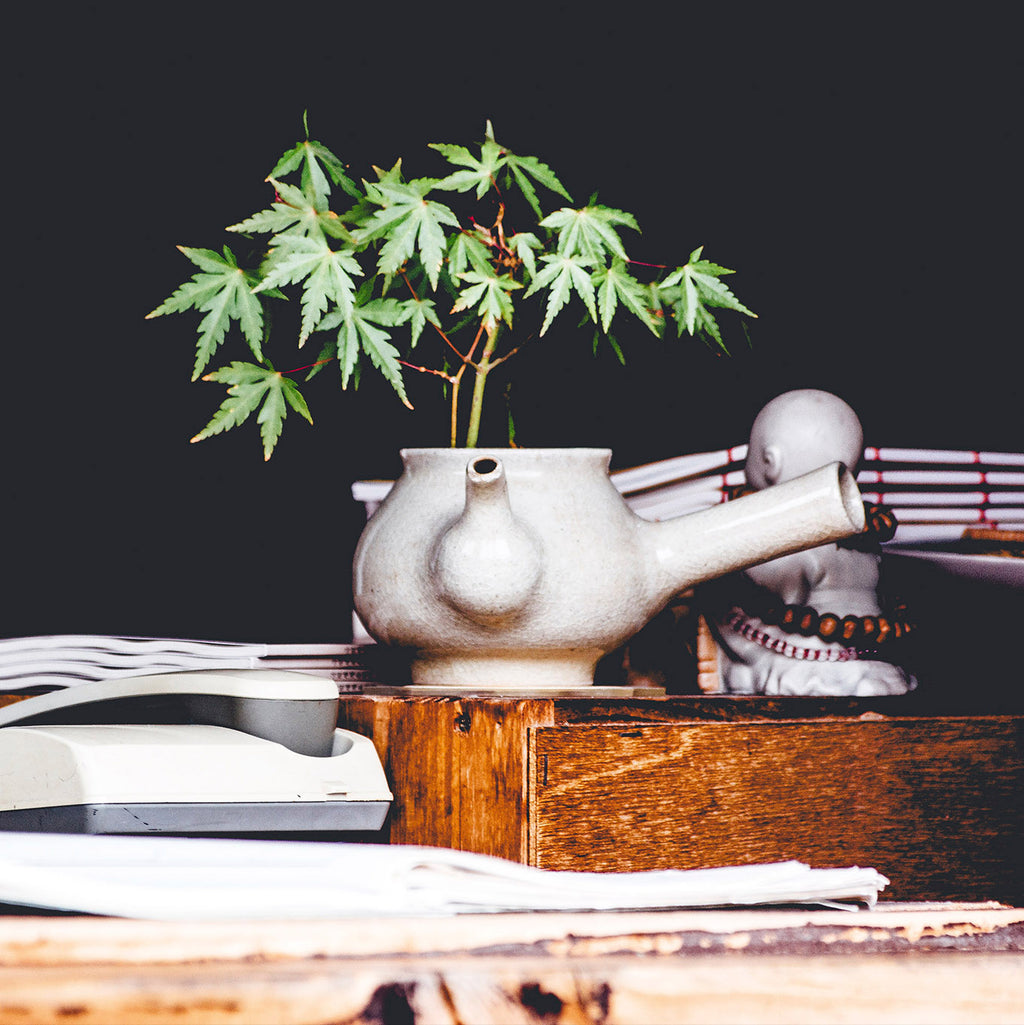The science behind edibles and how they compare to vaping

The science behind edibles and how they compare to vaping:
pros, cons and why vaping is better
In the growing consumption frenzy of loose leaf, it’s easy to get lost in all the various ways to use the dry herb for benefit. Why? Because at one point smoking was one of the most popular ways of using pot, if not the only way (For both recreational and medicinal purposes).
Vaping is very new and while edibles might be slightly less “modern”, there’s a lot of gaps in common knowledge, particularly the diverse use case, the methods of going about making edibles and the science behind it, which is fascinating yet somehow simple to understand.

Brownies, cookies, and tea are some of the most common edibles used
Edibles can be pretty hit or miss, both in terms of efficacy (this is rare but observable) or the likeness a person would take to it. Some people like that it lasts 10 hours while some want a shorter high while still wanting the discretion that edibles offer, in which case vaping is the way to go. CBD edibles are becoming popular as well and their use case is just as large as the conventional THC edibles. However, before we get into the nitty-gritty, let’s look at the science behind edibles.
The science behind edibles
The best way to illustrate how edibles work is by comparing it with smoking and vaping: smoking requires complete combustion, which leads to temperatures of over 800 degrees Celsius (1470 F). Edibles, on the other hand, don’t need combustion and the temperatures never rise above the boiling point (100C, 212F). But why is this important?
Because the chemicals that are released when smoking are different from the ones in edibles. Rather, the concentrations of the different chemicals vary. For example, the cannabinoid 9-delta-THC transforms into 11-hydroxy-THC in the liver. This is more likely to happen when we have edibles because edibles go through our digestive system followed by our liver, after which it enters our bloodstream. Smoking loose leaf, on the other hand, sees a smaller percentage of 11-hydroxy-THC conversion, primarily due to the fact that loose leaf in its smoke/vapor form goes through our lungs first before being diluted and going through the liver. This process of transforming 9-delta-THC to 11-Hydroxy-THC is known as decarboxylation.
This is one of the reasons why edibles tend to be much stronger than smoked loose leaf and the potency (and concentration) of 11-hydroxy-THC that goes to the blood is one of the reasons why the effects of edibles are so long-lasting.
Types of edibles
Contrary to popular belief, edibles aren’t restricted to brownies or mixing in butter to make cannabutter. There are several dozen other ways to “eat” loose leaf and many of them are for medicinal purposes. A lot of the variety available to us has to do with advances in science and technology, allowing us to manipulate dry herb in a way to suit very specific needs, which will be elaborated on below.
- Food
Foods are one of the most commonly used forms of edibles. They're universally identifiable and versatile in use because of the sheer amount of dishes you can make it with. The process is pretty straightforward: mix loose leaf with fat (usually butter or oil), heat it in a pan and extract the mixture. You can use that butter to make virtually any dish of choice. It's that simple.

Food-based edibles can be used to make any dish as long as it uses cannabutter
The drawback of this is that there’s very little predictability of what the dosage will be like. Latency is also an issue, with edibles sometimes taking up to 12 hours to kick in. There have been instances where the high never kicked in despite following procedure to the T or that a batch comes unexpectedly stronger or weaker than expected.
- Drinks
Another commonly used edible, drinks are a convenient way to “drink” the dry herb. Most people tend to use the stem or the leaf instead of the bud when it comes to drinks since there's little fat to mix it up with (loose leaf works best when mixed with high amounts of fat). Loose leaf-based teas and coffees are pretty popular as appetizers and give a nice kick, transporting you into a gentle trance.

Loose leaf can be used to make different kinds of drinks with bhaang (not pictured)
being a popular drink in India during the festival of Holi
Bhaang or Bhaanga is one of the most popular drinks in India during the festival of Holi, also known as the festival of colors or the festival of springtime. During Holi, scores of Indians have a drink Bhaang. Bhaang is an ancient drink where milk (or rather curd) is mixed with cannabis leaves, churned together to form a paste/thick, viscous liquid that becomes a drink. It’s also known as thandai, as it’s usually a drink served cold.
- Tinctures
Tinctures are when THC (or CBD) are extracted from loose leaf by keeping it in alcohol, mostly ethanol for its purity. Tinctures are used for medicinal purposes, with most patients using two-three drops in the mouth underneath the tongue and letting it stay there for about 30 seconds for it to be swallowed orally. They directly enter the bloodstream, producing effects within 20 minutes and lasting for about 3 hours.
Tinctures might not be as effective as other digestible edibles, but is more discreet and works well for people who want an exact dose for a shorter period of time.
- Capsules
A loose leaf capsule is one of the easiest ways of having an edible for medicinal purposes. Most people can make capsules to consume at home. An important thing to note is that while that does the job most of the time, there’s always the uncertainty of dosage, in which case buying pharmaceutical-grade THC or CBD pills might be the way to go.
There’s very little use of capsules for recreation and we recommend that you use capsules only for medical purposes.
- Dissolvable cannabinoid powders
A dissolvable cannabinoid powder is one of the most popular ways of eating loose leaf after cannabutter based edibles. Similar to edibles in several ways, its versatility makes it an instant hit across many target demographics: want to mix it in your cake? Go for it. Making a smoothie that could use some CBD? Why not?
A key problem that researchers and scientists working on these products had to overcome is that loose leaf isn’t dissolvable in water even after decarboxylation. After several tests and experiments, they found a specific emulsification process (or rather processes) that allowed loose leaf to be dissolvable in water and water-based solutions that didn’t have much fat in them.

Defy is a CBD based sports wellness drink that has many athletes use and endorse it
Their popularity is so extensive that many athletes have started using them for their recovery process. American tennis player John Isner signed a deal with CBD company “Defy”, with whom he’ll be carrying their CBD infused drinks in all his upcoming tournaments. Isner vouched for the benefits of the product, claiming that it helps him in his recovery process. A couple of years ago, no one would’ve imagined that professional athletes would be using variations of the dry herb to elongate their careers. CBD’s large use case and it’s non-psychedelic properties allow it to be a more acceptable form of cannabis for governing bodies, both within and outside sports.
Benefits of edibles
1) They’re long-lasting
While this can also be seen as a disadvantage in certain situations, the effects of edibles tend to be long-lasting, around 10-12 hours to be precise. However, it also takes over 2 hours for the effects to kick in, which can be a bottleneck in medical scenarios where day-to-day life is significantly impacted by the lack of medical pot (for people with speech issues or joint issues, the buffer is particularly important).
In a recreational setting, the length of the high can lead to a full day of fun, laughter and great experiences with friends and (maybe) family.
2) They’re discreet
Smoking loose leaf is a chore that can cause more messes than solve. It’s smelly and sticks to your clothes for a long time. It’s very easy to spot and difficult to hide. Edibles, on the other hand, aren’t smelly and can be hidden in plain sight. Also, depending on your cooking process, loose leaf can add a lot of flavor to what you’re having (like green tea). You could be cracking open a packet of home-made pot brownies while you’re at work and nobody would notice unless you gave some to them.
3) They’re healthy
Edibles are a much healthier alternative to smoking loose leaf. Drawbacks like the production (and consumption) of tar along with carcinogens and other harmful chemicals that come with smoking are nullified, not to mention the other side effects like stamina, breathing and strength aren’t compromised.
4) They’re simple
Rolling, while an enjoyable activity for many can be cumbersome and time-consuming. There’s no need to roll a joint or stuff a bong or a pipe. Edibles are simple to make and are hassle-free.
The drawbacks of edibles
1) Dosage issues
It’s very difficult to figure out how to go about dosing your edibles, particularly for medical purposes, unless you know your source very well and follow a certain process (heating, treating, cleaning, etc) to the T. For medical patients, small shifts in dosage and efficacy can make a huge difference in how they go about their day-to-day.
2) Loss of flavor
There’s a reason why edibles don’t really smell: it’s because they’re heated in lower temperatures and hence not allowing for the aromas and flavors to shine through.
3) Latency

Edibles can take a while to hit
As mentioned before, it takes over two hours for an edible to kick in. This can prove to be harmful to medical patients who rely on loose leaf on a daily basis to live a normal life, but also for recreational users where time constraints are a problem. In such cases, smoking or vaping is a benefit as the effects kick in within 20 minutes.
Why vaping trumps edibles
We’ve spoken extensively about why edibles can be a life-changing experience and its benefits over smoking and vaping. However, there are things for which vaping is a better alternative, not only to edibles but also to smoking.
1) It’s cost-effective
While buying a vape can be expensive, if you’re someone who smokes regularly, vapes are the way to go if you want more control over how strong the effect of the pot is on you and also if you want to save more money, as loose leaf can be expensive. In fact, studies show that vaping could be more cost-effective than smoking, tea or even edibles.
2) More control over potency

The AirVape X
Vaping is more cost-effective, can be more potent and more effective than edibles, both in the long and short-run
The only way to control how potent a hit will be when it comes to smoking is by mixing the loose leaf with tobacco, which can be unpleasant (not to mention unhealthy) experience. The potency of loose leaf (or extracted oils), when used in vapes, can be controlled by the temperature that you set.
3) Vaping CBD > Eating CBD
Cannabidiol or CBD has been catching on in popularity as a viable alternative to THC in the treatment of several physical and mental ailments like anxiety, depression, nausea, insomnia, and many other issues. The automatic assumption, hence, is that having CBD edibles will be just as effective and potent as having a THC edible. However, this isn’t the case, with studies showing that not only do vaporizers outrank edibles in terms of bioavailability but that they outrank any other form of consumption. (Bioavailability is the percentage of something being absorbed by the body.)
Airvape has a large line of vaporizers custom-made not only for people who prefer to vape through vape chambers with CBD/THC oils but also for those who like to vape loose leaf directly. We have a line-up of products that covers every possible use case, from people who want long battery life to people who prefer paying more for build quality to those who prefer functionality over anything and would like to pay less.
Overall, it’s a pretty complicated topic despite the fact that edibles have been at the forefront of loose leaf consumption for perhaps several millennia now. The use case is vast, the process, while streamlined and intrinsic for many people has a level of scientific complexity to it, especially dissolvable cannabinoids. On the other hand, vaping is also a complex topic to discuss for the same reasons and in many ways is a lot more beneficial than edibles. In the end, it comes down to personal preference and your use case. We would, however, suggest using vapes over edibles, especially if their drawbacks are a dealbreaker.


